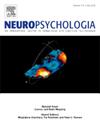Resolving conflicting interpretations: Theta band oscillations and the role of cognitive control
IF 2
3区 心理学
Q3 BEHAVIORAL SCIENCES
引用次数: 0
Abstract
While processing language, readers and listeners frequently encounter conflicting cues and must select the most plausible interpretation from incompatible alternatives. We tested the hypothesis that cognitive control aids in resolving representational conflicts by biasing processing toward the correct interpretation when multiple analyses of linguistic input are possible. Participants read temporarily ambiguous sentences alongside semantically and syntactically anomalous sentences. Ambiguous sentences, such as “While Anna dressed the baby spit up on the bed,” require resolving conflicts between competing interpretations, whereas semantic and syntactic anomalies, though they increase processing demands, do not involve such conflicts. Building on evidence from non-linguistic tasks, we used EEG to assess whether neural oscillations in the theta band (4–8 Hz) serve as a real-time index of cognitive control in resolving conflicting interpretations of linguistic input. Our findings revealed increased theta-band activity over right frontal electrodes during the processing of ambiguous sentences, indicating cognitive control engagement. Additionally, a neural decoding analysis showed that theta-band activity reliably distinguished between correctly and incorrectly understood ambiguous sentences, suggesting that theta activity not only reflects cognitive control engagement but also guides comprehenders toward the correct interpretation. In contrast, ERP analyses showed the expected P600 effects for syntactic anomalies and N400 effects for semantic anomalies, confirming the processing complexity associated with these sentences; however, theta power did not increase for these items. The results support the hypothesis that theta-band oscillations specifically reflect cognitive control processes involved in resolving representational conflicts in language comprehension, helping to prevent interpretation errors and providing insights into the temporal dynamics of cognitive control during sentence processing.
解决相互矛盾的解释:Theta波段振荡和认知控制的作用。
在处理语言的过程中,读者和听众经常遇到相互矛盾的线索,必须从不相容的选项中选择最合理的解释。我们测试了认知控制有助于解决表征冲突的假设,即当可能对语言输入进行多种分析时,认知控制会使处理偏向于正确的解释。参与者阅读暂时模棱两可的句子以及语义和句法异常的句子。模棱两可的句子,比如“当安娜给吐在床上的婴儿穿衣服时”,需要解决相互矛盾的解释之间的冲突,而语义和句法异常虽然增加了处理需求,但不涉及这种冲突。基于非语言任务的证据,我们使用脑电图来评估θ波段(4-8 Hz)的神经振荡是否可以作为解决语言输入的冲突解释的认知控制的实时指标。我们的研究结果显示,在处理模棱两可的句子时,右额叶电极的θ波段活动增加,表明认知控制参与。此外,一项神经解码分析显示,theta波段活动可靠地区分了正确和错误理解的歧义句子,这表明theta活动不仅反映了认知控制参与,而且还引导理解者走向正确的解释。相比之下,ERP分析显示,句法异常的预期效应为P600,语义异常的预期效应为N400,证实了这些句子的加工复杂性;然而,这些项目的theta功率并没有增加。研究结果支持了一种假设,即θ波段振荡具体反映了语言理解中解决表征冲突的认知控制过程,有助于防止解释错误,并为句子加工过程中认知控制的时间动态提供了见解。
本文章由计算机程序翻译,如有差异,请以英文原文为准。
求助全文
约1分钟内获得全文
求助全文
来源期刊

Neuropsychologia
医学-行为科学
CiteScore
5.10
自引率
3.80%
发文量
228
审稿时长
4 months
期刊介绍:
Neuropsychologia is an international interdisciplinary journal devoted to experimental and theoretical contributions that advance understanding of human cognition and behavior from a neuroscience perspective. The journal will consider for publication studies that link brain function with cognitive processes, including attention and awareness, action and motor control, executive functions and cognitive control, memory, language, and emotion and social cognition.
 求助内容:
求助内容: 应助结果提醒方式:
应助结果提醒方式:


